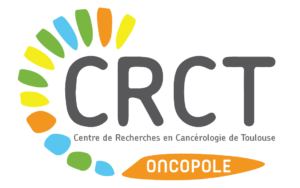Despite considerable research efforts, cancers remain the second leading cause of death in developed countries. Why so many more therapeutic failures? The reasons are multiple, the tumors are not always accessible to surgery, the current chemotherapy remains very toxic, and especially the tumors are able to adapt and resist conventional treatments. In a study recently published in the journal Nature Communications, the team led by Stefania Millevoi, Inserm researcher at the Centre de recherches en cancérologie de Toulouse (CRCT –Inserm/CNRS/UT3 Paul Sabatier) highlighted the major role of a protein interaction – RNA as a starting point for mechanisms of resistance to brain tumour treatments.
An organism is continually under stress by intrinsic or environmental agents. When these stresses cause DNA damage, they can cause mutations leading to the development of a tumor. Fortunately, cells have DNA repair mechanisms that allow them to survive these alterations. But in the case of cancer treatments (chemotherapy, radiotherapy), the aim of which is to damage the DNA to induce the death of tumor cells, altered repair mechanisms can compromise their effectiveness.
In this study, the research team led by Stefania Millevoi, in collaboration with Erik Dassi’s team (CIBIO, Trento, Italy), highlighted the important role of non-routine RNA structures, called G-quadruplexes, in the regulation of DNA repair protein expression. This study suggests that altering the interaction between G-quadruplexes and their protein partners would lead to resistance mechanisms to traditional glioblastoma treatments, a highly aggressive brain tumour. Thus, these RNA structures and the factors regulating them, could be promising targets in the treatment of this cancer, and increase the chances of survival. This study therefore opens up new therapeutic perspectives that will undoubtedly be exploited by future research.
This work received financial support from Labex Toucan and a Région Occitanie/ Inserm grant.


Discover the published article :
Nat Commun . 2020 May 27;11(1):2661.
hnRNP H/F Drive RNA G-quadruplex-mediated Translation Linked to Genomic Instability and Therapy Resistance in Glioblastoma
Pauline Herviou , Morgane Le Bras , Leïla Dumas , Corinne Hieblot , Julia Gilhodes , Gianluca Cioci , Jean-Philippe Hugnot , Alfred Ameadan , François Guillonneau , Erik Dassi , Anne Cammas , Stefania Millevoi
Key words :
- G-quadruplexes,
- RNA binding proteins,
- protein synthesis,
- genomic instability,
- resistance, glioblastoma
Contact :
Stefania Millevoi
Team 5 CRCT, director S. Millevoi
Mail : stefania.millevoi@inserm.fr
One picture :

The structuring of RNA G-quadruplexes, regulated by hnRNP H/F proteins or small molecules, modulates the protein synthesis of key factors in the response to DNA damage, which has an impact on the response to gliobastomic treatments.

